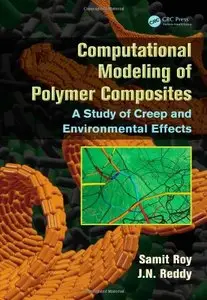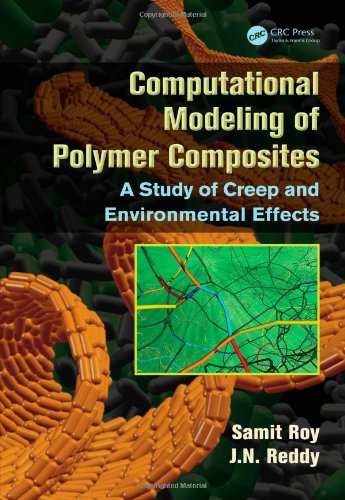Computational Modeling of Polymer Composites: A Study of Creep and Environmental Effects by Samit Roy and J.N. Reddy
English | 2013 | ISBN: 1466586494 | 300 pages | PDF | 9,2 MB
English | 2013 | ISBN: 1466586494 | 300 pages | PDF | 9,2 MB
Computational Modeling of Polymer Composites: A Study of Creep and Environmental Effects details the development of polymeric materials and their use in smart materials and composite structures in aerospace and automotive industries.
Based on the authors' work during the past 30 years, this book provides a strong understanding of the theories and associated finite element life-prediction models for elastic and viscoelastic response of polymers and polymer composites in aggressive environments. The subject is an interdisciplinary one where chemists, material scientists, and chemical, mechanical, and structural engineers contribute to the overall product.
Books on polymer composites are usually of three types: material science, mechanics, and computational. This book combines mechanics of materials with the computational element. The authors suggest an introductory course on mechanics of materials to cover all bases. The book begins with mathematical preliminaries, equations of anisotropic elasticity, virtual work principles, and variational methods. It provides an introduction to the finite element method and finite element analysis of viscoelastic materials, and then moves on to the solvent diffusion process in polymers and polymeric composites, as well as the linear and nonlinear viscoelastic models and the implementation of finite element models of viscoelastic materials.
Computational Modeling of Polymer Composites: A Study of Creep and Environmental Effects delves into both uniaxial and multiaxial cases and delayed failure before discussing the finite element analysis of the nonlinear diffusion process in polymers. It also includes non-Fickean diffusion of polymers, the coupled hygrothermal cohesive layer model for simulating debond growth in bimaterial interfaces, and the viscoelastic cohesive layer model for the prediction of interlaminar shear strength of carbon/epoxy composites. The final chapter covers a multi-scale viscoelastic cohesive layer model for predicting delamination in high temperature polymer composites. This book can be used as a reference or as a graduate course textbook on theory and/or finite element analysis of polymers and polymeric composites.



